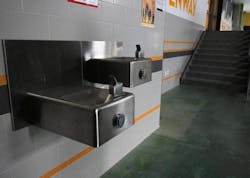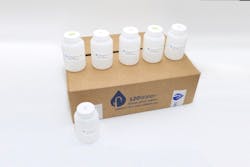Study Shows Interest in School Lead Testing Lacking
About the author:
It has been almost seven years since the U.S. was rocked by the news of widespread lead contamination of the drinking water supply in Flint, Mich. Before the crisis was uncovered and remediated, as many as 12,000 children were exposed to high levels of lead in drinking water.
Just last year, the victims were awarded a combined settlement of $641 million. 80% of the settlement went to the families of children affected by lead poisoning to help with potential long-term effects, including reduced intellectual functioning and an increased chance of developing Alzheimer’s disease later in life.
In one news report at the time, a retired Flint school official said, “I actually think it will be quite a while before we trust drinking this Flint water.”
Unfortunately, complacency seems to have set in again.
Study Overview
A recent national study conducted by 120Water polled 500 school administrators and 1,000 parents of school-aged children to determine the awareness around lead testing in schools.
While the study shows most parents of school-aged children understand the danger to their children of lead in drinking water, only about half knew the last time their school drinking water was tested for lead. Likewise, just 53% of school leaders knew the last time the school water was tested.
Even more distressing, 60% of school leaders said they would not participate in voluntary lead testing programs, or would only do so if the program was free.
How Big is the Lead in Drinking Water Problem?
Lead gets into drinking water in one of two ways: either through lead service lines that bring the water into the building or through lead plumbing hardware, including faucets.
120Water has sampled more than 43,000 drinking fountains and taken more than 209,000 samples from fixtures in schools and facilities across the country. Almost 7% had lead levels equal to or greater than 10 ppb, and more than 80% had levels equal to or exceeding 1 ppb.
As officials have yet to identify a “safe” level of lead in drinking water, the American Pediatrics Association advocates for only 1 ppb as the desired threshold. In other words, most schools failed.
The average public school building was approximately 44 years old as of 2017 (Edweek, 2017), or built around 1973. This is 23 years before Congress passed any lead regulation for plumbing products, and more than 40 years before Congress updated regulations minimizing the use of lead in the manufacture of plumbing fixtures. This suggests many schools across the country have leaded faucets, water coolers, and plumbing parts throughout buildings.
Lead & Copper Rule Revision Requirements
Soon, schools will not be able to ignore the issue. The pending Lead and Copper Rule Revisions (LCRR), the first significant changes to the rule since it was introduced in 1991, will require the first federal mandate for school lead testing. Under the new revisions, utilities will be required to sample 20% of elementary schools (both public and private) and 20% of all childcare facilities in their service area each year.
While mandated testing is a step forward, systems will only be required to sample five fixtures at schools and two fixtures at childcare facilities to stay in compliance. This is just a fraction of the number of fixtures typically found in these buildings.
Resources & Funding for Testing
While these new revisions will not likely take effect until 2024, there is no reason for schools to wait to test their drinking water for lead. Local school leaders and elected officials can join voluntary programs if one is available in their state or area. If no such program exists, they can perform their own sampling.
Federal funding for lead testing in schools is available through the Water Infrastructure Improvements for the Nation Act (WIIN) and is available to all 50 states and U.S. territories through non-competitive grant applications.
If protecting future generations and safeguarding public health is something our nation values, then awareness must be spread and action must be taken soon to update the water infrastructure of our nation’s schools.


